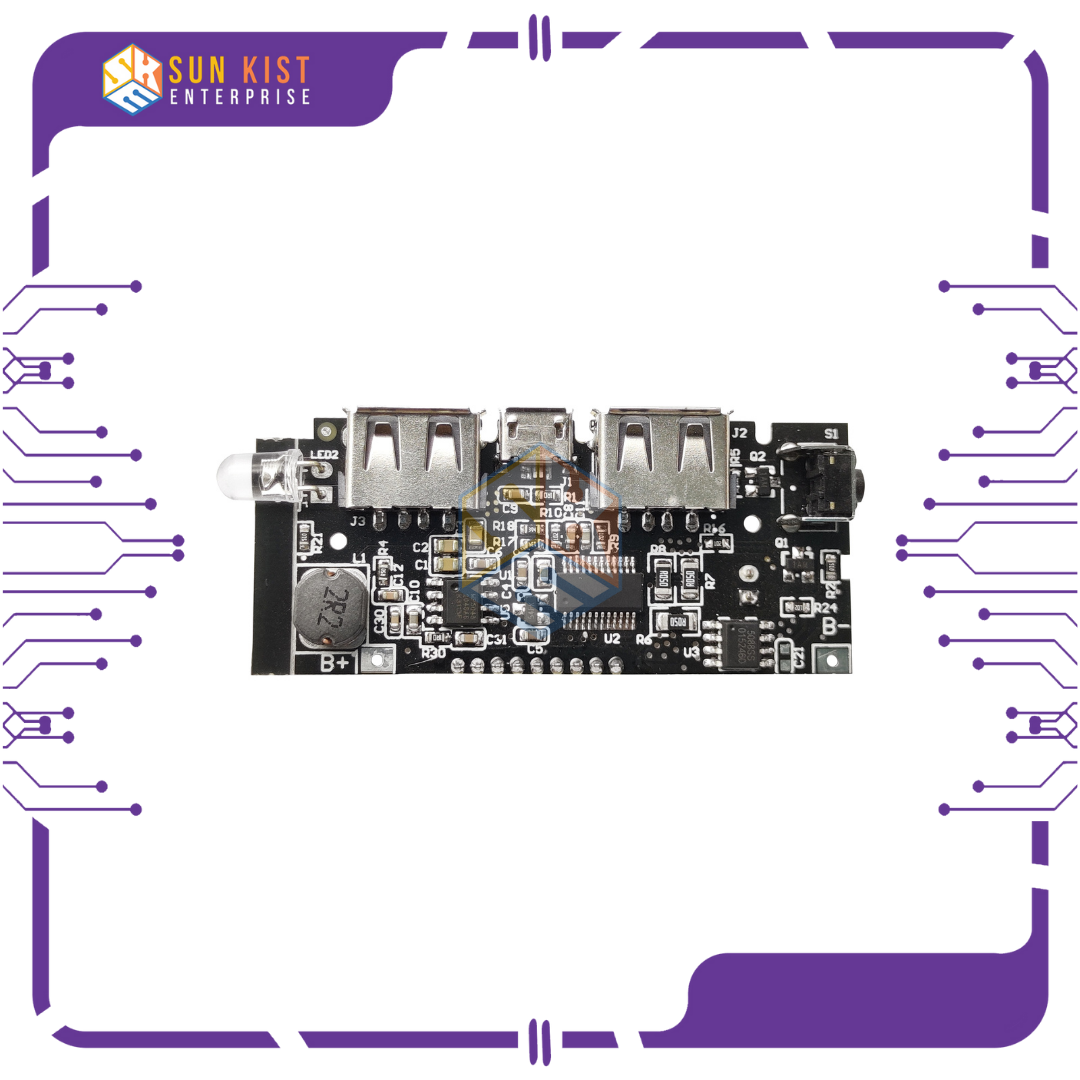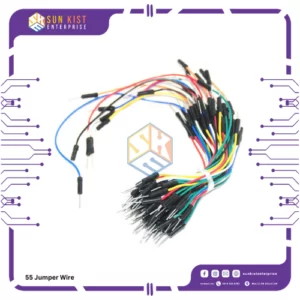Description
A “Power Bank Module” refers to a compact, portable device or circuit that is designed to store electrical energy and later release it to charge electronic devices such as smartphones, tablets, cameras, and more. It essentially functions as a miniaturized power supply for on-the-go charging. Here’s a description of its key features and characteristics:
1. Energy Storage: The core function of a power bank module is to store electrical energy. It typically uses rechargeable lithium-ion or lithium-polymer batteries to store this energy.
2. Charging Source: Power bank modules are charged via a standard USB connection, micro USB, or USB-C input. They are commonly charged from a wall charger, a computer’s USB port, or a solar panel, depending on the model.
3. Output Ports: Power bank modules come equipped with one or more USB output ports that allow you to connect and charge various electronic devices. These ports are often labeled with their maximum output current, such as 1A or 2.1A.
4. Capacity: Power bank modules come in various capacities, usually measured in milliampere-hours (mAh) or watt-hours (Wh). The capacity determines how many times a device can be charged or how much additional runtime it can provide.
5. LED Indicators: Many power bank modules feature LED indicators that display the current battery level or charging status. This provides information about the remaining charge in the power bank.
6. Protection Circuit: To ensure safety and prevent overcharging or over-discharging, power bank modules often include protection circuitry. This circuitry protects both the power bank and the connected devices.
7. Compact and Portable: Power bank modules are designed to be compact and lightweight, making them easy to carry in a bag or pocket for on-the-go use.
8. Fast Charging: Some power bank modules support fast charging technologies such as Quick Charge or Power Delivery (PD) for faster device charging.
9. Compatibility: Power bank modules are compatible with a wide range of electronic devices, including smartphones, tablets, Bluetooth headphones, cameras, and more, provided they can be charged via USB.
10. Recharge Cycle: The number of recharge cycles a power bank module can endure varies based on the quality and type of batteries used. High-quality units can last for hundreds of charge-discharge cycles.
11. DIY Projects: Power bank modules are also used by electronics enthusiasts and hobbyists in DIY projects to create custom portable power supplies or to upgrade and repair existing power banks.
Power bank modules are a convenient and essential accessory for modern life, providing a reliable source of backup power when your electronic devices run out of battery on the go. They are available in various capacities and features to suit different needs, from emergency charging to extended usage during outdoor activities and travel.











Reviews
There are no reviews yet.